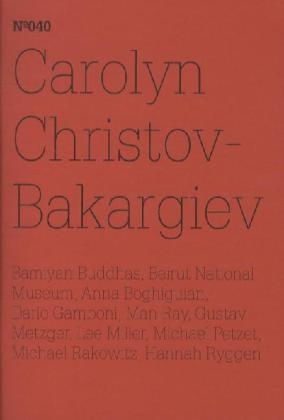Read more
Carolyn Christov-Bakargiev reflektiert aus persönlicher wie historischer Sicht über Zerstörung und über Kunst sowie über die heilende Kraft, die Kunst potenziell haben kann. Sie führt uns durch eine Matrix von etymologischen, historischen, philosophischen, persönlichen und kunstgeschichtlichen Bezugspunkten und leitet den Leser von Melanie Kleins Gedanken über die dyadische Beziehung zwischen Mutter und Kind und Walter Benjamins Betrachtungen zu Klees Angelus Novus zu Objektstudien, beginnend bei Man Rays Metronomen, seinen Objects of Destruction, und Lee Millers Fotografien vom Ende des Zweiten Weltkrieges. Weiter geht es mit Gustav Metzgers "Auto-destructive Art"-Manifest, verbrannten Objekten aus dem Beirut National Museum und den gesprengten Buddhas von Bamiyan, denen der Bericht von Michael Petzet mit der Reaktion des ICOMOS auf die Zerstörung der Denkmäler folgt, zu Kunstwerken von Michael Rakowitz und Zeichnungen mit Gedichten von Anna Boghiguian. In einer Nachschrift widmet sich der Kunsthistoriker Dario Gamboni der Zerstörung von Kunstobjekten, dem Konzept des "Welterbes" sowie den rechtlichen Implikationen. Für Christov-Bakargiev ist "der Bereich der Kunst, der am Rand des Privaten und der Geschichte balanciert, zu einem Ort geworden, an dem man mit Erfahrungen am Rand des Anthropozentrischen, wo die Trümmer liegen, experimentieren [...] kann". Carolyn Christov-Bakargiev ( 1957) ist künstlerische Leiterin der dOCUMENTA (13).
Summary
Carolyn Christov-Bakargiev reflects on the historical as well as personal notion of destruction and art, as well as on the potential healing power that art can have. Guiding us through a web of etymological, historical, philosophical, personal, and art historical references, she takes the reader from Melanie Klein’s thinking about the dyadic relationship between mother and child and Walter Benjamin’s reflection on Klee’s Angelus Novus, to object studies starting with Man Ray’s metronomes, his Objects of Destruction, and Lee Miller’s photographs from the end of World War II, to Gustav Metzger’s “Manifesto of Auto-Destruction,” to melted objects from the Beirut National Museum and the blown-up Bamiyan Buddhas, which are accompanied by Michael Petzet’s report of ICOMOS’s response to the destroyed monuments, followed by artworks by Michael Rakowitz and drawings with poems by Anna Boghiguian, in addition to a postscript by art historian Dario Gamboni on the destruction of art, the concept of “world heritage,” and the legislation around it. For Christov-Bakargiev, “the sphere of art is poised on the edge of the private and of history, and becomes the location where one can experiment the possibilities of being on the edge of the anthropocentric, where the rubble lies.” Carolyn Christov-Bakargiev (*1957) is Artistic Director of dOCUMENTA (13).

